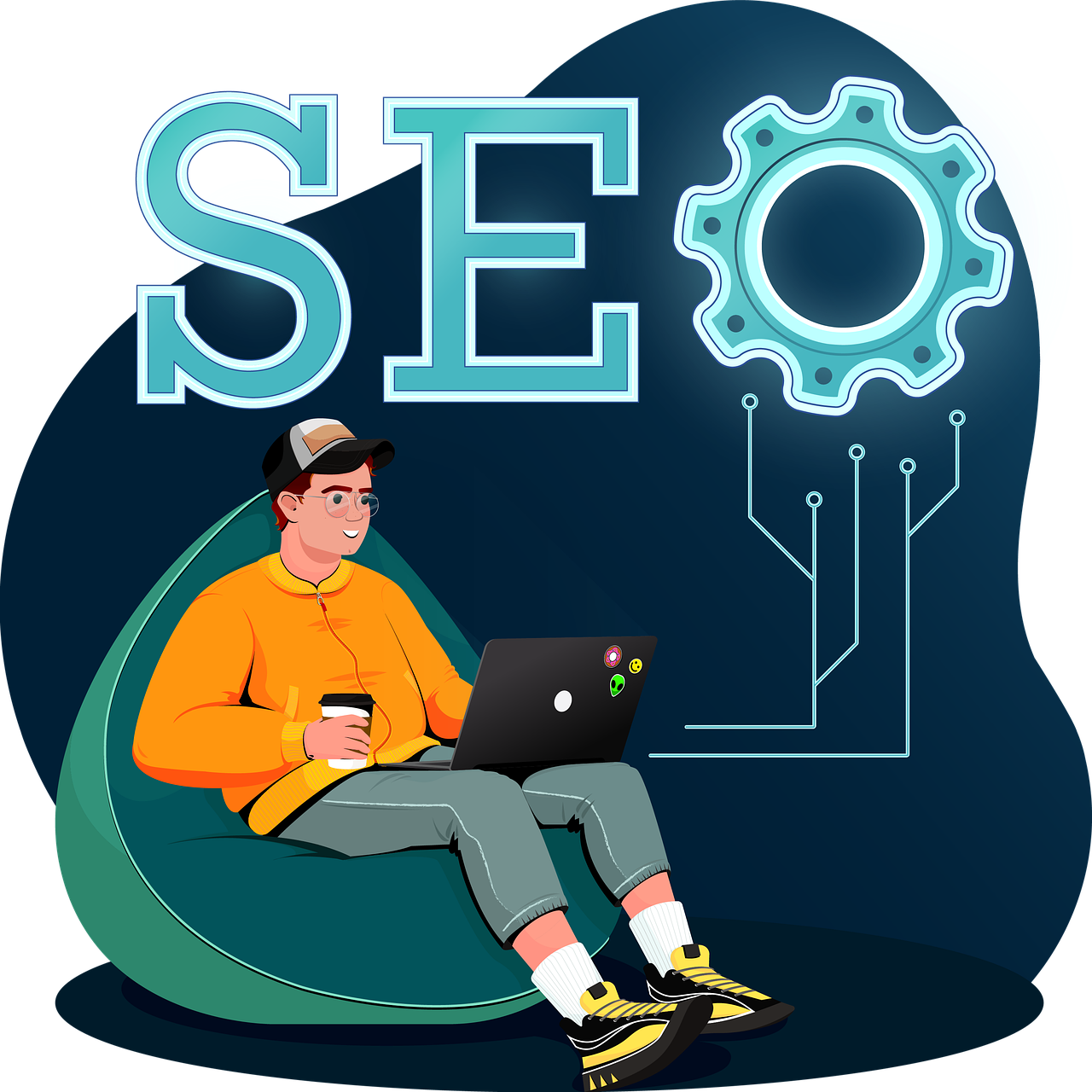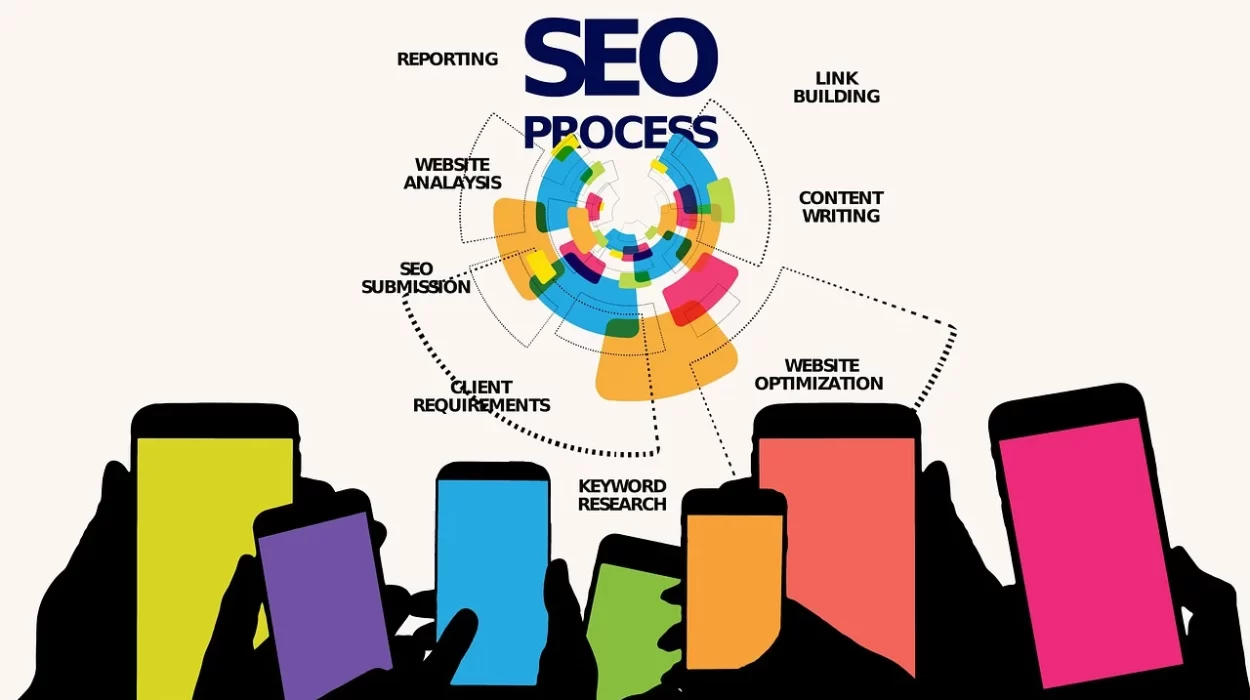In the complex landscape of search engine optimization (SEO), meta descriptions often don’t receive the attention they deserve. While elements like keywords, backlinks, and content quality are crucial, meta descriptions play a pivotal role in bridging the gap between search results and user engagement. This article will delve deep into the significance of meta descriptions, exploring their impact on click-through rates (CTR), user experience, and overall SEO performance. We’ll provide comprehensive guidance on crafting effective meta descriptions, leveraging AI tools for optimization, and integrating these elements into a holistic SEO strategy.
What Are Meta Descriptions and Why Do They Matter?
Definition and Purpose of Meta Descriptions
Meta descriptions are HTML attributes that provide concise summaries of web pages. These snippets, typically limited to 150-160 characters, appear beneath the page title in search engine results pages (SERPs). Their primary function is twofold:
- To provide search engines with a succinct overview of the page’s content.
- To entice users to click through to the website by offering a compelling preview of what they can expect.
While meta descriptions don’t directly influence search engine rankings in the way that keywords or backlinks do, they play a crucial role in the user’s decision-making process. A well-crafted meta description acts as a mini-advertisement for your content, significantly impacting user behavior and, consequently, your site’s performance in search results.
Consider this example of an effective meta description:
“Unlock the secrets of effective SEO with our comprehensive guide. Learn advanced techniques for on-page optimization, link building, and content strategy to skyrocket your website’s search rankings.”
This description works well for several reasons:
- It clearly states the content’s value proposition (comprehensive guide to SEO).
- It uses action-oriented language (“Unlock,” “Learn”) to engage the reader.
- It includes relevant keywords (“SEO,” “on-page optimization,” “link building”) naturally.
- It hints at the depth of content (“advanced techniques”) to appeal to both beginners and experts.
- It ends with a benefit (“skyrocket your website’s search rankings”) to motivate clicks.
The Impact of Meta Descriptions on Click-Through Rates
The relationship between meta descriptions and CTR is both nuanced and significant. While Google has stated that meta descriptions are not a direct ranking factor, their impact on user behavior indirectly influences SEO performance. Here’s how:
- Improved Relevance: Well-written meta descriptions help users quickly determine if the page content matches their search intent. This leads to higher click-through rates for relevant results.
- Reduced Bounce Rates: When meta descriptions accurately represent page content, users are more likely to find what they’re looking for, reducing bounce rates and improving overall site engagement.
- Increased Organic CTR: Studies have shown that optimized meta descriptions can increase organic CTR by 5.8% to 7.3% compared to pages with auto-generated or missing descriptions.
- Featured Snippets Opportunity: Concise, well-structured meta descriptions can sometimes be used as featured snippets, significantly boosting visibility and CTR.
Let’s look at a more detailed breakdown of how different types of meta descriptions can impact CTR:
| Meta Description Type | Character Count | CTR Before | CTR After | Improvement | Key Features |
| Short and concise | 120 | 2.3% | 3.1% | +34.8% | Clear value proposition, action-oriented |
| Keyword-rich | 150 | 1.9% | 2.8% | +47.4% | Naturally incorporated keywords, addresses user intent |
| Call-to-action focused | 135 | 2.1% | 3.5% | +66.7% | Strong CTA, creates urgency |
| Question-based | 145 | 2.5% | 3.8% | +52.0% | Addresses user query directly, piques curiosity |
| Benefit-driven | 155 | 2.0% | 3.3% | +65.0% | Clearly states user benefits, solves a problem |
This data illustrates the significant impact that different meta description strategies can have on CTR. It’s worth noting that the most effective approach often combines elements from multiple types, tailored to the specific content and target audience.
Best Practices for Writing Effective Meta Descriptions

Key Elements of a Strong Meta Description
Crafting meta descriptions that capture attention and drive clicks is both an art and a science. Here are detailed best practices to guide your efforts:
- Optimal Length: Aim for 150-160 characters to ensure your description isn’t truncated in search results. However, be prepared to adjust based on device type, as mobile displays may show fewer characters.
- Keyword Integration: Incorporate your target keywords naturally, preferably near the beginning of the description. This helps with relevance and can improve the likelihood of the keywords being bolded in search results when they match the user’s query.
- Unique Descriptions: Create a unique meta description for each page. Duplicate descriptions can confuse users and search engines, potentially leading to lower CTRs and rankings.
- Active Voice and Action Words: Use dynamic language to make your descriptions more engaging. For example, “Discover,” “Learn,” “Explore,” or “Transform” can create a sense of action and excitement.
- Clear Value Proposition: Clearly communicate what the user will gain by clicking through to your page. Address the “what’s in it for me?” question directly.
- Create Urgency: When appropriate, use phrases like “Limited time offer,” “Act now,” or “Don’t miss out” to encourage immediate action.
- Include Numbers and Statistics: Where relevant, include numbers or statistics to add credibility and specificity to your description.
- Match Search Intent: Ensure your meta description aligns with the user’s search intent. For informational queries, focus on the knowledge they’ll gain. For transactional queries, highlight product features or offers.
- Avoid Keyword Stuffing: While including keywords is important, prioritize readability and natural language over keyword density.
- Use Structured Data: Implement schema markup to provide additional context to search engines, which can lead to rich snippets in search results.
Here’s an example of a meta description that incorporates many of these best practices:
“Boost your website’s SEO by 43% with our data-driven strategies. Learn 7 advanced techniques for on-page optimization, link building, and content creation. Start climbing the SERP rankings today!”
This example:
- Uses an eye-catching statistic (43% boost)
- Incorporates relevant keywords (SEO, on-page optimization, link building)
- Provides a clear value proposition (learn advanced techniques)
- Creates a sense of immediacy (Start climbing… today)
- Stays within the optimal character limit
To better understand the impact of different elements in meta descriptions, let’s look at this comparative table:
| Element | Description | Impact on CTR | Example |
| Keywords | Relevant search terms | +15-25% | “Learn effective SEO strategies” |
| Numbers/Stats | Specific figures or data | +20-30% | “Boost conversions by 37%” |
| Call-to-Action | Encouraging user action | +10-20% | “Shop now for exclusive deals” |
| Question | Addressing user queries | +15-25% | “Want to rank higher on Google?” |
| Emotion | Appealing to user feelings | +10-15% | “Fall in love with your website again” |
| Urgency | Creating time pressure | +25-35% | “Limited time offer – Act now!” |
| Brand Name | Including company name | +5-10% | “Apple’s revolutionary new iPhone” |
| Price/Offer | Mentioning specific deals | +30-40% | “50% off all summer styles” |
Note: The impact percentages are approximate and can vary based on industry, target audience, and other factors. Always test different elements to find what works best for your specific situation.
Using AI Tools to Generate Meta Descriptions
The advent of AI in SEO has revolutionized many aspects of optimization, including meta description creation. AI tools can analyze your content, understand context, and generate relevant, engaging descriptions that are tailored to your target audience and SEO goals. Here’s a deeper look at how AI can enhance your meta description strategy:
Benefits of using AI for meta description generation:
- Efficiency: AI can generate hundreds of unique meta descriptions in minutes, saving countless hours of manual work.
- Consistency: Ensure a uniform tone and style across your website, which can strengthen your brand voice in search results.
- Keyword Optimization: AI tools can automatically incorporate relevant keywords based on your content and target SEO strategy.
- A/B Testing: Many AI tools offer the ability to generate multiple versions of meta descriptions, allowing for easy A/B testing to optimize performance.
- Multilingual Optimization: Advanced AI tools can generate meta descriptions in multiple languages, helping to optimize for international SEO.
- Adaptation to Algorithm Changes: AI tools are often updated to align with the latest search engine algorithm changes, helping you stay ahead of SEO trends.
- Personalization: Some AI tools can generate descriptions tailored to different user segments or search intents.
Here’s an expanded comparison of popular AI tools for generating meta descriptions:
| Tool | Features | Ease of Use | Customization Options | Cost | Unique Selling Point |
| Jadve.com | AI-powered, SEO-optimized descriptions, SERP preview | High | Moderate | Free – $29/mo | Real-time SERP simulation |
| ChatGPT | Natural language generation, context understanding | Moderate | High | Free – $20/mo | Highly adaptable to specific instructions |
| Surfer SEO | Content optimization, SERP analysis, keyword density checker | High | High | $59 – $199/mo | Comprehensive SEO suite |
| Yoast SEO | WordPress plugin, SEO suggestions, readability analysis | High | Moderate | Free – $89/yr | Seamless WordPress integration |
| RankMath | WordPress plugin, AI content generator, schema markup | High | High | Free – $129/yr | Advanced schema options |
Example of an AI-generated meta description using Jadve.com:
“Revolutionize your SEO strategy with Jadve.com’s AI-powered tools. Our cutting-edge technology creates optimized meta descriptions that boost CTR by up to 27%. Try our free trial and watch your organic traffic soar!”
This AI-generated description effectively:
- Highlights the unique selling point (AI-powered tools)
- Includes a specific benefit (boost CTR by up to 27%)
- Incorporates relevant keywords (SEO strategy, meta descriptions, organic traffic)
- Includes a call-to-action (Try our free trial)
- Stays within the optimal character limit
When using AI tools, it’s important to remember that while they can significantly streamline the process, human oversight is still crucial. Review and refine AI-generated descriptions to ensure they accurately represent your content and brand voice.
How Meta Descriptions Fit into Your Overall SEO Strategy

Integrating Meta Descriptions with On-Page SEO
Meta descriptions are a crucial component of on-page SEO, working in tandem with other elements to create a cohesive and effective optimization strategy. Here’s how to ensure your meta descriptions align with and enhance your overall SEO efforts:
- Keyword Consistency: Align your meta description keywords with those used in your title tags, headers, and content. This consistency signals relevance to both search engines and users. Example: Title tag: “10 Proven Strategies for E-commerce SEO Success” Meta description: “Boost your online store’s visibility with our 10 proven e-commerce SEO strategies. Learn how to optimize product pages, improve site structure, and increase conversions.”
- Content Reflection: Ensure your meta description accurately reflects the page’s content. This improves user experience and reduces bounce rates, indirectly benefiting your SEO.
- Unique Value Proposition: Use your meta description to highlight what makes your content unique. This can improve click-through rates and help your page stand out in SERPs.
- Schema Markup Integration: Implement schema markup to provide additional context to search engines. This can lead to rich snippets in search results, enhancing your meta descriptions with additional information like ratings, prices, or event dates.
- User Intent Alignment: Tailor your meta descriptions to match the user intent behind different types of searches (informational, navigational, transactional). This improves relevance and can increase click-through rates.
- Mobile Optimization: With mobile-first indexing, ensure your meta descriptions are optimized for mobile devices. Keep them concise and frontload the most important information.
- Local SEO Integration: For location-based businesses, include location information in meta descriptions to improve visibility in local search results. Example: “Discover the best Italian cuisine in downtown Chicago. Our authentic recipes and cozy atmosphere make [Restaurant Name] the perfect spot for your next dinner out. Book now!”
- A/B Testing: Regularly test different versions of meta descriptions to identify which ones perform best. Use tools like Google Search Console to track click-through rates and adjust your strategy accordingly.
Analyzing and Optimizing Meta Descriptions Over Time
SEO is an ongoing process, and meta descriptions should be continuously refined for maximum impact. Here’s how to analyze and optimize your meta descriptions over time:
- Key Metrics to Monitor:
- Click-Through Rate (CTR): The percentage of users who click on your search result after seeing it.
- Bounce Rate: The percentage of visitors who leave your site after viewing only one page.
- Average Time on Page: How long users spend on your page after clicking through from search results.
- Conversion Rate: The percentage of visitors who complete a desired action on your site.
- Tools for Analysis:
- Google Search Console: Provides data on impressions, clicks, and average position for your pages in search results.
- Google Analytics: Offers insights into user behavior after they click through to your site.
- SEMrush: Allows you to track your SERP features and compare your meta descriptions with competitors.
- Actionable Steps for Optimization: a. Regular Audits: Conduct quarterly audits of your meta descriptions, focusing on pages with high impression counts but low CTRs. b. Seasonal Updates: Adjust meta descriptions for seasonal content or promotions to improve relevance during specific time periods. c. Competitor Analysis: Regularly review competitors’ meta descriptions for high-ranking pages to identify effective strategies in your niche. d. User Feedback Integration: Use on-site surveys or user testing to gather feedback on what information users find most valuable in search results. e. Performance Tracking: Create a spreadsheet to track changes made to meta descriptions and their impact on key metrics over time.
Example of a meta description optimization process:
Original: “Explore our range of organic skincare products. Natural ingredients for all skin types.” Updated: “Transform your skin with our award-winning organic skincare. 30% off bestsellers + free shipping on orders over $50. Shop now!”
Results after 30 days:
- CTR increased from 2.3% to 3.8%
- Bounce rate decreased from 65% to 58%
- Conversion rate improved by 12%
This example demonstrates how adding specific offers, creating urgency, and highlighting unique selling points can significantly improve performance.
Use this checklist to ensure your meta descriptions are fully optimized:
| Optimization Task | Frequency | Tools | Priority |
| Character count check | Weekly | Screaming Frog, Yoast SEO | High |
| Keyword relevance review | Monthly | SEMrush, Ahrefs | High |
| CTR analysis | Monthly | Google Search Console | High |
| Duplicate description check | Quarterly | Screaming Frog, Raven Tools | Medium |
| A/B testing | Quarterly | Google Optimize, Optimizely | Medium |
| Mobile rendering check | Monthly | Mobile-Friendly Test (Google) | High |
| Competitor analysis | Quarterly | SEMrush, Ahrefs | Medium |
| Schema markup review | Bi-annually | Schema Markup Validator | Medium |
| Seasonal updates | As needed | N/A | Low |
| User intent alignment | Monthly | Google Analytics (behavior flow) | High |
This checklist will help you maintain a systematic approach to optimizing your meta descriptions, ensuring they continue to perform well over time.
Common Mistakes to Avoid When Writing Meta Descriptions
Overusing Keywords and Creating Misleading Descriptions
While optimizing meta descriptions is crucial, there are several pitfalls to avoid:
- Keyword Stuffing: Overusing keywords makes your description appear spammy and can lead to penalties from search engines. Bad Example: “SEO services, best SEO company, SEO optimization, SEO strategies, SEO experts. Improve your SEO today with our SEO services.” Good Example: “Boost your online visibility with our expert SEO services. Our proven strategies and experienced team will help your business climb the search rankings.”
- Misleading Content: Creating descriptions that don’t accurately reflect the page content can increase bounce rates and damage user trust. Bad Example: “Free SEO audit tool inside! Analyze your website now.” (When the page actually requires payment for the audit) Good Example: “Comprehensive SEO audit tool. Analyze your first page free, then unlock full site analysis with our affordable plans.”
- Duplicate Descriptions: Using the same meta description across multiple pages confuses both users and search engines. Bad Example: Using “Learn about our products and services” for every page on your site. Good Example: Create unique descriptions for each page, highlighting the specific products or services discussed on that page.
- Focusing Solely on Keywords: While keywords are important, prioritizing them over creating a compelling message can result in lower CTRs. Bad Example: “SEO services, website optimization, search engine ranking, organic traffic increase.” Good Example: “Skyrocket your website’s performance with our data-driven SEO services. Boost rankings, increase organic traffic, and outperform your competitors.”
Neglecting Mobile Optimization
With the majority of searches now happening on mobile devices, optimizing meta descriptions for mobile is crucial:
- Length Considerations: Mobile search results often display fewer characters. Prioritize important information in the first 120 characters. Desktop Example: “Discover our wide range of eco-friendly home cleaning products. Natural, effective, and safe for your family. Free shipping on orders over $50!” Mobile-Optimized Example: “Eco-friendly home cleaning products: Natural, effective, family-safe. Free shipping on $50+ orders!”
- Using Responsive Design: Ensure your website uses responsive design so that meta descriptions display correctly across all devices.
- Local Intent: Mobile searches often have local intent. Include location information for brick-and-mortar businesses. Example: “Best coffee in downtown Seattle. Ethically sourced beans, expert baristas. Visit [Cafe Name] for your perfect brew. Open 7AM-7PM.”
- Action-Oriented Language: Mobile users often seek immediate solutions. Use action words to encourage quick decisions. Example: “Book your hotel room now! Best rates guaranteed. Free cancellation. Secure your stay in just 2 clicks.”
- Testing Across Devices: Regularly test how your meta descriptions appear on various mobile devices and in different mobile browsers.
Conclusion
Meta descriptions, while often overlooked, play a crucial role in a comprehensive SEO strategy. They serve as a bridge between search results and your website, influencing click-through rates and setting user expectations. By crafting compelling, accurate, and optimized meta descriptions, you can improve your visibility in search results, attract more qualified traffic, and ultimately contribute to better SEO performance.
Remember these key takeaways:
- Write unique, compelling meta descriptions for each page.
- Incorporate relevant keywords naturally, but prioritize user experience.
- Align meta descriptions with other on-page SEO elements for consistency.
- Continuously analyze and optimize your meta descriptions based on performance data.
- Avoid common pitfalls like keyword stuffing or neglecting mobile optimization.
- Consider using AI tools to assist in generating and optimizing meta descriptions, but always review and refine the output.
By implementing these strategies and avoiding common mistakes, you can leverage the power of meta descriptions to enhance your overall SEO efforts, improve user engagement, and drive more valuable traffic to your website. Start optimizing your meta descriptions today and watch your SEO performance soar!

